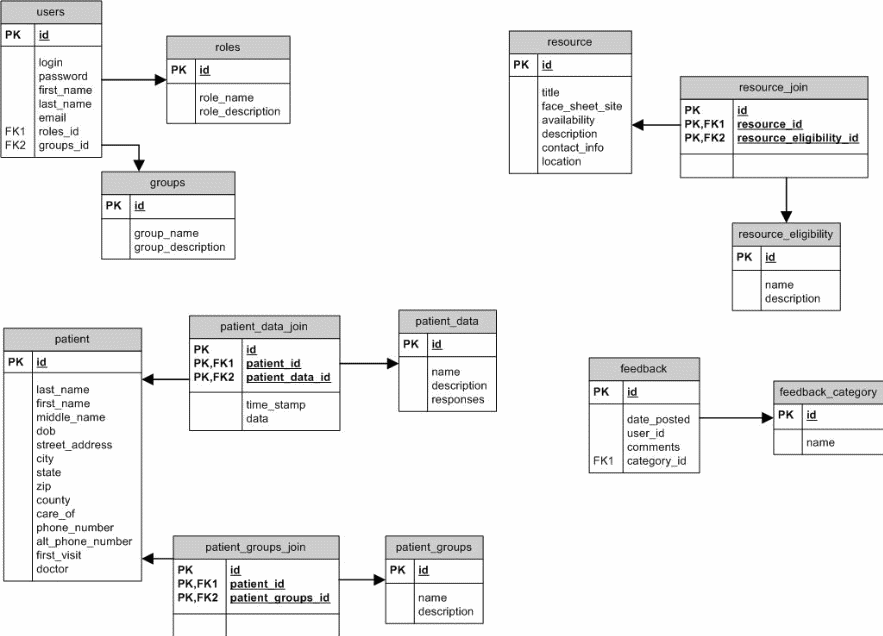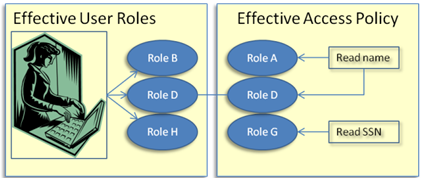|
Parent/Child (Inheritance) and Hierarchical Permissions
For example, the "Patient" grouping has multiple permissions that can be configured, such as read patient name, read patient identifiers, and read patient SSN. These permissions are structured in a hierarchy where an undefined permission inherits its value from its parent permission. This hierarchy model essentially limits the number of permissions that must be set to achieve a desired security policy.
As shown below, the user (with Roles B, D and H assigned) can read the selected patient's name but not the patient's SSN.
|



